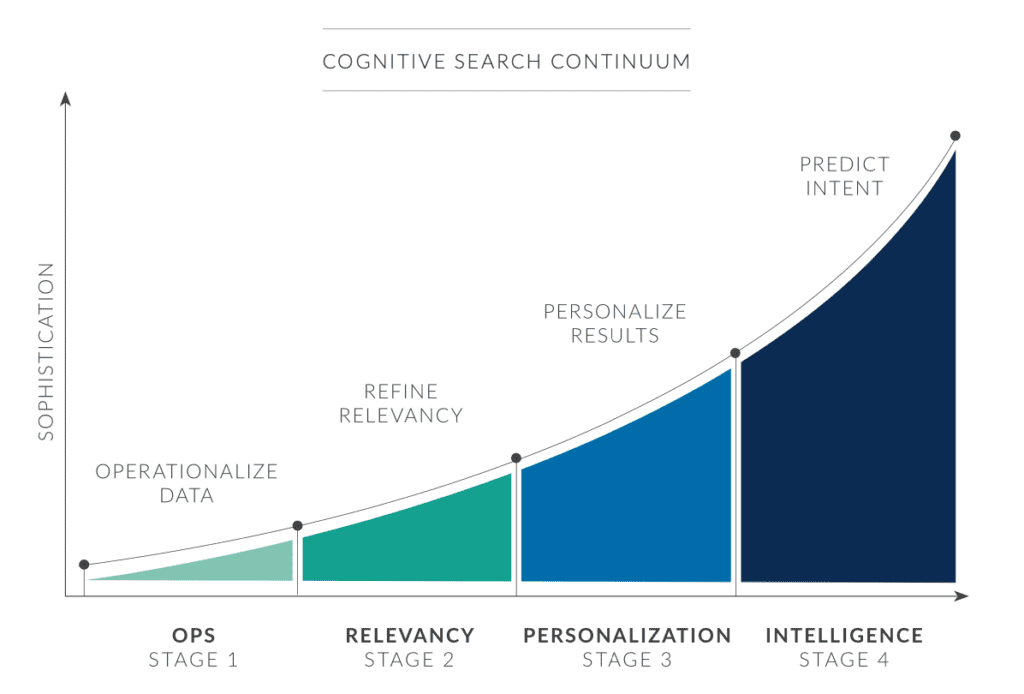What’s Next in Enterprise Search Software
When you work in enterprise search, it can be hard to see where the industry sits moment to moment. It’s a technology that’s fully matured in some ways, but there are still advances happening all the time that make it easier than ever to connect employees to the information they have to have to do their jobs.
Lucidworks developed the Cognitive Search Continuum in the workplace, a four-part maturity model showing how organizations can start to evolve their search platform from simple keyword search applications to more powerful capabilities.

The horizontal axis shows the maturity of your search applications over time. The vertical axis charts the increasing technical sophistication of your search and big data initiatives, and the increased value to the end user.
Stage 1: Ops
The first stage is simply selecting and getting a search engine platform up and running. You’ve gone through procurement, purchased, built, tested a search platform and – after some internal gnashing of teeth – it’s in production. You’re searching just a few data sources (a SharePoint server, Google Drive, or just the company intranet). Long story short: Getting data in, and getting data out.
Stage 2: Relevancy
Stage 2 is about improving search results relevancy through both manual adjustments like business rules and automated strategies. Admins can add boosts and blocks to move particular documents up and down in search results. Business rules can be implemented to fulfill policies and practices or specific roles and business units.The number of active users increases, along with session time and queries, views, and clicks. This stokes internal word-of-mouth buzz for the app.
Stage 3: Personalization
The third stage in our continuum is when platform, data, and applications work together seamlessly to give every user a personalized data experience and point them to their “next best action.” The system captures signals like clicks, views, ratings, past queries, and other events to constantly refine relevance. Patterns in user behavior are aggregated to create customized views of data and search results specific to each user. As more employees use the system it learns more about what they really do every day.
Stage 4: Intelligence
Stage 4 is about getting intelligence into the apps. Apps have gone beyond the keyboard and search box. Now your team can interact through voice, image upload, or media file. When users ask vague questions, the system asks for clarification. Search results take into account who, where, and how the user is at that moment. It considers what they did last, and guesses what they’re about to do.
Of course the journey is never complete. Using the cognitive search continuum as a roadmap, you can iterate through the stages to provide the best experiences for faster insights and increased productivity,
Let’s get going!
Get ready to replace hit-or-miss search with an all-in-one answer platform designed to give information workers all the insights they need, whenever they need them. Discover how Lucidworks combines powerful search with integrated machine learning and a customizable UI to revolutionize how employees seek information and find answers. Contact us today!